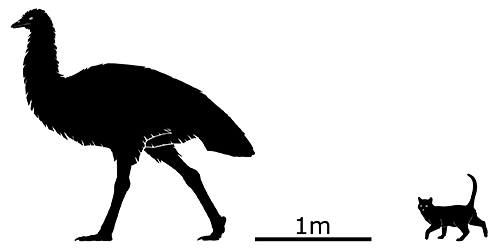By far the biggest island in the Late Cretaceous European archipelago, the Ibero-Armorican island (sometimes also known as the Ibero-Occitan island) was made up of most of the Iberian Peninsula and France and was larger than modern-day Madagascar.
Around 73-71 million years ago one of the residents of this island was the aptly-named Gargantuavis – the largest known Mesozoic bird, and probably an example of island gigantism.
Although only known from a few isolated bones, it’s estimated to have been slightly larger than a modern cassowary, somewhere in the region of 2m tall (6′6″). At that size it would have also been secondarily flightless, which is surprising for a bird that was living alongside larger fast-moving theropods like abelisaurs.
Not much else is known about it due to the scarce remains, but it seems to have had a long slender neck and probably had a small head. Its hips were fairly broad, suggesting it wasn’t capable of running very fast, and it was likely a slow-moving herbivore that was a fairly rare member of its ecosystem.
Exactly where it belongs in the bird evolutionary tree is also unclear, with the best current guess being “some sort of euornithean”.


